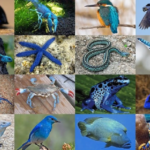- How Long Does A Quaker Parrot Live? - 17 May 2024
- 4 Hacks on Keeping Your Home Clean With Pets - 28 March 2024
- 5 Things to Know Before Bringing Home a New Kitten - 26 March 2024
Spike deer are one of the most common and beloved deer species in North America. They are found in a variety of habitats from forests and woodlands to mountains and prairies. Spike deer are known for their small size their reddish brown coats and their white underbellies. They are also known for their large ears which they use to stay alert for predators.
History of Spike Deer
The Cervus nippon also known as the spike deer has a rich and extensive history. East Asia is the natural home of these tiny deer. Where they have spent decades being both hunted and revered. Spike deer fossils date to approximately 2.5 million years ago during the Pleistocene epoch. These prehistoric deer inhabited most of Eurasia and were considerably larger than their contemporary equivalents. Spruce deer had withdrawn to its present habitat in East Asia by the late Pleistocene. When their size had started to decline.
It is believed that circa 2000 BC spike deer were tamed in China. Although they were initially raised for their meat and fur. They were also kept as pets and for draught work. In China, domesticated spike are still kept as famous tourist attractions. Deer are usually seen in wooded places in the wild. Being herbivores they consume a wide range of vegetation such as fruits twigs and leaves. Spike deer are gregarious creatures that inhabit in herds comprising no more than ten members.
Physical Appearance

The tiny to medium sized Cervus virginianus spike deer is a native of North and Central America. They are distinguished by their summertime reddish-brown coats and wintertime grayish-brown coats with white underbellies. This is a thorough description of their physical attributes.
| Characteristic | Description |
| Body Size | Medium-sized |
| Coat Color | Brown to reddish-brown in summer |
| Tail | Short tail with a white underside |
| Ears | Large |
| Hooves | Split hooves |
| Eyes | Large |
| Diet | Herbivorous |
| Habitat | Diverse habitats |
| Lifespan | Average lifespan of 4 to 6 years |
What do spike deer eat?
Spike deer like other deer species are herbivores with a diet that consists primarily of grasses, forbs shrubs and woody plants. They graze on various grasses for essential nutrients and also browse on the leaves, twigs and buds of shrubs contributing to a diverse diet. These young males may consume the bark, leaves and twigs of woody plants particularly during winter when other food sources may be limited.
Fruits nuts and mast such as acorns serve as important energy sources especially in the fall. The specific plants in their diet can vary based on the region season and availability of food highlighting the adaptability of their feeding habits as they navigate their environment
What difference between Spike Deer and buck

“Buck” covers all male deer regardless of antler development while “spike deer” narrows it down to young bucks with straight unbranched antlers. So think of all spike deer as bucks but not all bucks are spiky teenagers. Here’s a table to summarize the key differences:
| Feature | Buck | Spike Deer |
| Sex | Male deer of any age | Male deer with specific antler characteristics |
| Antlers | Any type from nubs to branched racks | Straight, unbranched antlers |
| Age | Any age | Typically yearlings (1.5 years old) |
Diseases and Predators
Spike deer face a gauntlet of threats from deadly diseases like EHD and CWD to cunning predators like coyotes and mountain lions. While hunting adds to the pressure populations can bounce back depending on the interplay of factors like predator numbers and hunting regulations. Wildlife managers grapple with this complex interplay to ensure the continued survival of these graceful herbivores.
Protect Spike Deer Population in California
Once numbering nearly two million California’s graceful deer have dwindled to around 475,000 facing challenges like vanishing habitats and changing predator-prey dynamics. To prevent their further decline a multi-pronged approach is key. We must safeguard their dwindling forests and meadows restore degraded ecosystems and manage hunting responsibly. Balancing predator populations and raising public awareness are also crucial. Continued research and monitoring will guide our efforts. Ensuring these gentle herbivores thrive alongside a healthy balanced ecosystem. Let’s join hands to protect California’s iconic spike deer for their future is intrinsically linked to ours.
People Shoot Spike Deer for Various Reasons
People hunt deer for various reasons including securing food enjoying the challenge of the hunt, and managing deer populations to protect ecosystems. However it’s a controversial topic due to animal welfare concerns and potential environmental impact sparking ongoing debate about the ethics and necessity of deer hunting.
















